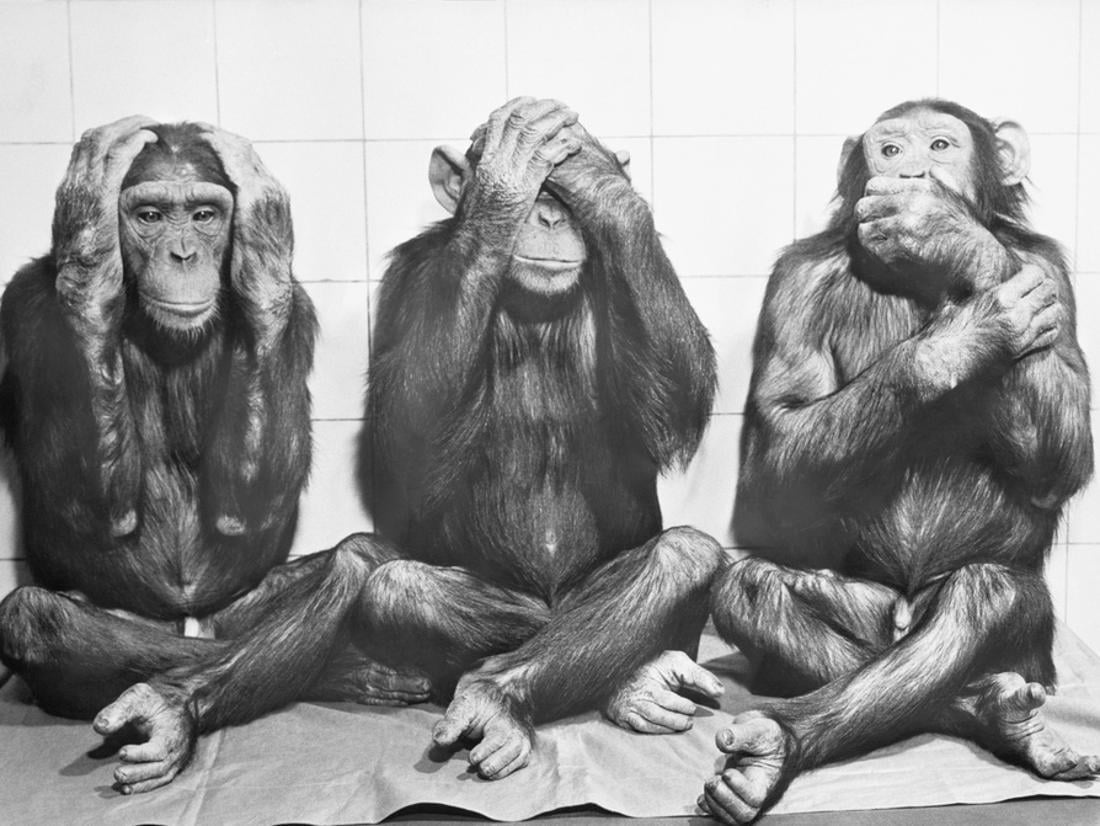

The shrine at Nikko is a Shinto shrine, and the monkey is an extremely important being in the Shinto religion. Thus the saying (which does not include any specific reference to "evil") can also be interpreted as referring to three monkeys. The saying in Japanese is mizaru, kikazaru, iwazaru ( 見ざる, 聞かざる, 言わざる) "see not, hear not, speak not", where the -zaru is a negative conjugation on the three verbs, matching zaru, the modified form of saru ( 猿) "monkey" used in compounds. Though the teaching had nothing to do with monkeys, the concept of the three monkeys originated from a simple play on words.

During the later part of the Muromachi period, it was customary to display stone pillars depicting the three monkeys during the observance of Kōshin.

A considerable number of stone monuments can be found all over the eastern part of Japan around Tokyo. It was founded by Tendai Buddhist monks in the late 10th century. The Kōshin belief or practice is a Japanese folk religion with Chinese Taoism origins and ancient Shinto influence. It is through the Kōshin rite of folk religion that the most significant examples are presented. Those may be the inspiration for the pictorial maxim after Chinese works were brought into Japan. In Chinese, two similar phrases exist: one is in the late Analects of Confucius (from 4th to 2nd century BCE), that reads: "Look not at what is contrary to propriety listen not to what is contrary to propriety speak not what is contrary to propriety make no movement which is contrary to propriety" ( 非禮勿視,非禮勿聽,非禮勿言,非禮勿動) the other is in the book Xunzi (from the 3rd century BCE), which reads: " makes his eyes not want to see what is not right, makes his ears not want to hear what is not right, makes his mouth not want to speak what is not right, and makes his heart not want to deliberate over what is not right" ( 使目非是無欲見也,使耳非是無欲聞也,使口非是無欲言也,使心非是無欲慮也). It has been suggested that the figures represent the three dogmas of the so-called middle school of the sect. The philosophy, however, probably originally came to Japan with a Tendai- Buddhist legend, from China in the 8th century ( Nara Period). There are a total of eight panels, and the iconic three wise monkeys picture comes from panel 2.
#Hear no evil speak no evil code#
The carvings at Tōshō-gū Shrine were carved by Hidari Jingoro, and believed to have incorporated Confucius’s Code of Conduct, using the monkey as a way to depict man’s life cycle. The source that popularized this pictorial maxim is a 17th-century carving over a door of the famous Tōshō-gū shrine in Nikkō, Japan. A World War II poster directed at participants in the Manhattan Project


 0 kommentar(er)
0 kommentar(er)
